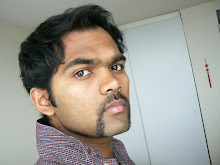MY DEAR GRANDMOTHER
The greatest person on earth since Bhisma acharya... has now fulfilled her mission on earth. With children, grandchildren, great-grandchildren and great-great grandchildren... she was the complete essence of an Indian grandmother, and some more. A strong woman who was a source of inspiration to many, she will be missed by all.
 |
| Janaki Bai (aka) Bhoomi: 28 November 1915 - 11 October 2011 |







